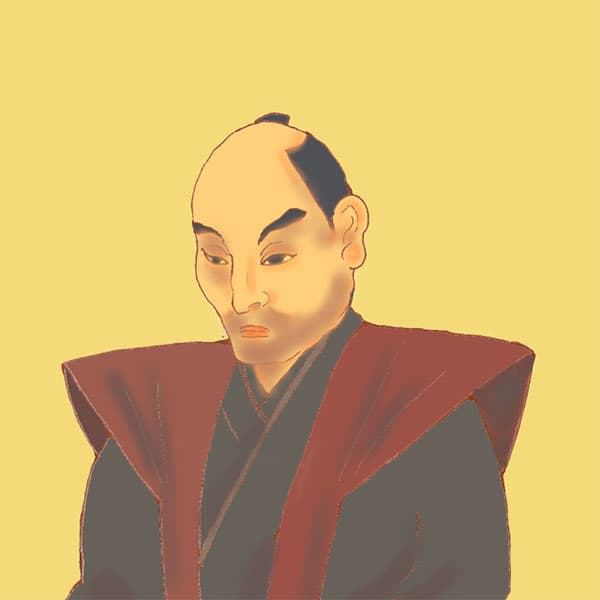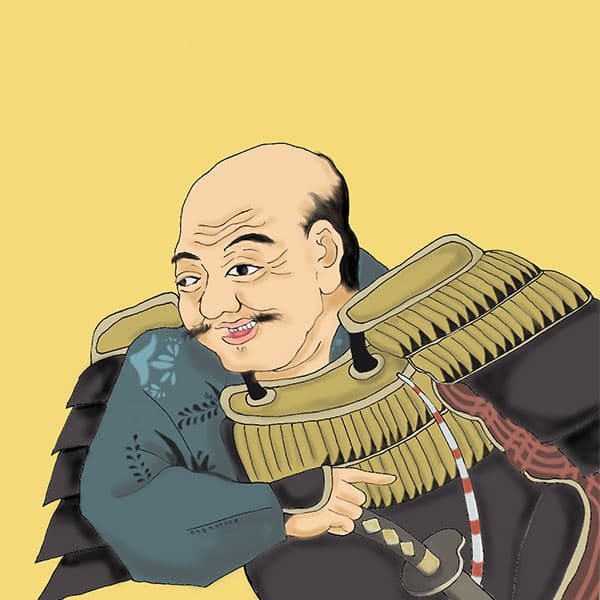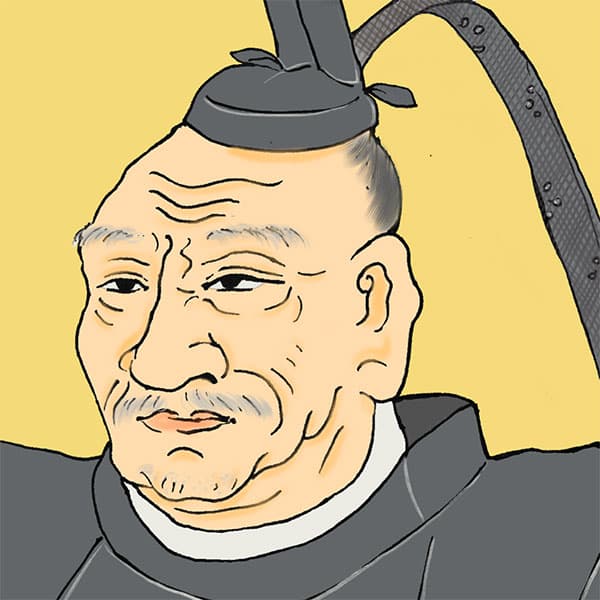Okubo Nagayasu Incident (1/2)An embezzlement case in the early Edo period? Or a political change? What is the “Okubo Nagayasu Incident”?

Okubo Nagayasu Incident
- Article category
- case file
- Incident name
- Okubo Nagayasu Incident (1613)
- place
- Yamanashi Prefecture
- Related castles

Odawara Castle

Tateyama Castle

Kofu Castle

Matsumoto Castle
National treasure tower
- people involved
Political factionalism is always present. However, now even if you lose, you won't lose your life. However, during the Edo period, there were cases where clans were destroyed as a result of losing the battle for power. One of these was the Okubo Nagayasu Incident that occurred in 1613. After the death of Nagayasu Okubo, who was in charge of developing a gold and silver mine, he was accused of illegally accumulating wealth and overthrowing the shogunate, and his family was sentenced to death.The big names in the shogunate who had protected Nagayasu also fell into the trouble of reform. I met you. In this article, I will explain the Okubo Nagayasu Incident to find out what kind of incident it was.
What kind of person is Nagayasu Okubo?
Before we unravel the incident, let's take a look at what kind of person Nagayasu Okubo was in the first place. Choyasu was born in 1545 as the second son of Okura Shinyasu, a sarugaku performer who served Takeda Shingen. Nagayasu served Masatsugu Tsuchiya, a chief retainer of the Takeda family who was known as the ``Twenty-Four Generals of the Takeda,'' and at this time changed his surname from Okura to Tsuchiya.
Nagayasu Tsuchiya was in charge of internal affairs and agricultural policy within the Takeda territory, as well as the development of mines such as the Kuroyama Gold Mine. After Shingen died, he served Takeda Katsuyori. After the Takeda family was destroyed in the Koshu conquest by Oda Nobunaga and Tokugawa Ieyasu in 1582, he served the Tokugawa family.
Why did a vassal of the Takeda family decide to serve the enemy Tokugawa family? However, there is a theory that Ieyasu allowed him to serve in the government because of his skill in constructing a temporary residence during the Koshu conquest, and another theory is that Ieyasu allowed him to serve in the government because of his skill in building a temporary residence during the Koshu conquest, and that he was sent to the government via Shoichi Naruse, a vassal of the Tokugawa family who served the Takeda family for a while. There is a theory that he sold his abilities to the Tokugawa family. After the fall of the Takeda clan, Ieyasu brought in former vassals into his power, so this may have been part of his efforts.
Nagayasu became the ruling power of Tadayuki Okubo, a senior vassal of the Tokugawa family, and at this time changed his surname to ``Okubo.'' After that, under the protection of Tadanori, he became involved in domestic affairs and rose through the ranks one after another.
Developed Hachioji as a vassal of the Tokugawa family
After Oda Nobunaga was killed in the Honnoji Incident in 1582, Kai became the domain of Ieyasu. At that time, Kai was in ruins due to the chaos following the fall of the Takeda clan, and Ieyasu ordered Masanobu Honda and Tadatsugu Ina to rebuild it. However, it is said that it was Chang'an that actually undertook the reconstruction.
Domestic politics is Chang'an's specialty. He restored the levees of the Kamanashi River and the Fuefuki River, worked hard to develop new rice fields and mine gold mines, and rebuilt Kai's domestic administration in just a few years.
In 1590, after Toyotomi Hideyoshi defeated the Hojo clan and unified the country in the Odawara Conquest, Ieyasu was confined to the Kanto region. One million of the 2.5 million countries in the Kanto region came under Ieyasu's direct control, but Choyasu, along with Tadanari Aoyama, Tadatsugu Ina, Nagatsuna Hasegawa, and Motomasa Hikosaka, was appointed as magistrate (local government head) and came to rule over the territory under his direct control. Choyasu created a land register after entering the Kanto region, which was said to have been very useful when Ieyasu later distributed territory to his vassals in the Kanto region.
In 1591, Nagayasu himself was given a territory of 8,000 koku (actually 9,000 koku) in Hachioji, Musashi Province by Ieyasu, set up a camp in Hachioji-juku (Hachioji City, Tokyo), and served as the 18th magistrate of Hachioji. I left it there and proceeded with construction of the post. In addition, he surveyed the surrounding areas including Tama, and built an embankment called ``Iwami Bank'' and planted bamboo in order to calm down the Asakawa River, which repeatedly flooded with its water source from Mt. Takao and Mt. Kagenobu.
The Iwami Embankment was designed to prevent major breaches by making cuts in various parts of the embankment and securing areas that were likely to be flooded as retarding basins. It is the same system as the ``Kamitsui'', which is said to have been devised by Shingen, whom Nagayasu previously served. In this way, Nagayasu made full use of his experience serving the Takeda family and continued to play an active role.
He also recommended to Ieyasu the creation of the ``Hachioji 500 Doshin'' consisting mainly of former Takeda vassals to maintain public order and border security in Musashi Province. In 1599, Ieyasu granted permission to double the number of doshins, and the famous ``Hachioji Sennin Doshin'' was born.
By the way, after Ieyasu's death, the Hachioji Sennin Doshin served as guards at Nikko Toshogu Shrine, and gradually became farmers. However, at the end of the Edo period, he was revived as a retainer of the Shogunate. In fact, it has a deep connection with the Shinsengumi, and its director, Isamu Kondo, learned Tennen Rishin-ryu, a swordsmanship learned by Hachioji Sennin Doshin. The parents of Genzaburo Inoue, the leader of the 6th division, served as the guardians of Hachioji Sennin Doshin.
The shogunate's "safeguard" - Developing and developing gold and silver mines
After the Battle of Sekigahara in 1600, all the Sado gold mines and Ikuno silver mines that had been under the control of the Toyotomi family became the property of the Tokugawa family. Then, Ieyasu appointed Nagayasu as Yamato magistrate, and then appointed him as inspector of Iwami silver mine and requisition of Sado gold mine. The Takeda family's skill in managing the silver mines was recognized, and Choyasu moved forward to secure financial resources for the shogunate. He was expected to play an active role in the Tokugawa family as the so-called "accountant" and "safety keeper." The following year, he concurrently served as Kai magistrate, Iwami magistrate, and Mino magistrate.
In 1603, when Ieyasu became shogun, Nagayasu was also appointed to the rank of Jugoi (Junior Fifth Rank), Shimoishi-no-Kami, and was appointed as the chief retainer of Ieyasu's sixth son, Tadateru Matsudaira. By the way, this Tadaki Matsudaira will appear again in the future, so please keep it in mind.
In the same year, he was appointed as Sado Magistrate, where the gold and silver mines were located, and as Jomu Magistrate (later Kandai Magistrate), and also became Toshiyori (later Roju). In 1606, he was appointed as the Izu magistrate as gold mine development progressed. I decided to concurrently hold positions that are all related to gold and silver mines. Although he was a former vassal of the Takeda family and was a so-called ``foreigner'', he rose rapidly through the ranks, which probably means that he was highly valued by Ieyasu.
As a result, Ieyasu entrusted Choyasu with the management of gold and silver mines, the development of transportation networks in the Kanto region, and the establishment of milestones to serve as indicators for travelers. In charge of the gold and silver mines, he rapidly increased the output of the Sado gold mines and developed the mines in Izu. By incorporating new mining methods and smelting techniques learned from the West, the production volume of various mines was significantly increased. It was said that the mines that Chang'an was involved in were filled with gold and silver.
Regarding transportation network development, milestones were established on the Tokaido, Tosando, and Hokuriku roads in 1601, and post towns were developed. By the way, it was Chang'an that established the distances that we know today: 1 li = 36 towns, 1 town = 60 ken, and 1 ken = 6 shaku.
Participate in faction wars as the "general representative of the nation"
Furthermore, Chang'an continued to expand its network of contacts through active diplomatic strategies. In addition to marrying his son to the daughters of Yasunaga Ishikawa and Terumasa Ikeda, and becoming related to him, he also arranged the marriage between Tadateru Matsudaira and Masamune Date's eldest daughter, Goro Hachihime, and thus became close friends with Masamune. Because of his extensive network of connections with powerful people and feudal lords, he came to be called the ``general representative of the nation.'' For Chang'an, it can be said that the spring of this world has truly arrived.
By the way, Chang'an loves luxury and women. There are many anecdotes about his misdeeds, such as allowing many women to accompany him on his mine inspections, and renovating the castle he inspected to his liking. Apparently, he left behind a will that after his death, his body would be placed in a golden coffin and a splendid funeral would be held in Kai. Ieyasu may have been bitter about it, but he seemed to have tolerated it because he was a talented person.
Within the shogunate, Nagayasu and Tadachika Okubo were part of the ``Budan faction,'' and they were engaged in a power struggle with the ``Bunji faction,'' which was centered around Honda Masanobu and Masazumi's father and son. Meanwhile, the Okamoto Daihachi Incident occurred from 1609 to 1612.
Daihachi Okamoto, a vassal of Masazumi Honda, took advantage of the fact that Christian feudal lord Arima Harunobu wanted to regain his territory as a reward for sinking a Portuguese ship in Nagasaki, and defrauded Harunobu of a large amount of money and goods. This is an incident where bribes were taken. Suspecting that some of the money and goods they received had ended up in the hands of Masazumi Honda, the Mudan faction attacked the Bunji faction. Choyasu was in charge of making decisions regarding the Okamoto Daihachi incident, and perhaps due to the anti-Bunji faction's intentions, Daihachi was executed and Harunobu was ultimately sentenced to death. Honda and his son managed to avoid being implicated, but the Bunji faction suffered great damage, and the Mudan faction came to boast of power.
Although Choyasu boasted of power, in his later years he lost Ieyasu's favor due to a decline in the amount of gold and silver mined, and was dismissed from his magistrate positions one after another. Then, on April 25, 1613, he died of paralysis in Sunpu. He passed away at the age of 69.
Suspicion of embezzlement and overthrow of the shogunate after death
Although he was highly appointed by the shogunate, rose through the ranks, and had some bad luck in the end, his life was generally satisfying. Chang'an seems to be. The person himself may have been reasonably happy, but those involved suffered terrible consequences due to the fraudulent accumulation of wealth that was discovered after his death. That is the Okubo Nagayasu Incident, which is the main topic of this article.
The article on the Okubo Nagayasu incident continues.
- people involved

- WriterNaoko Kurimoto(Writer)I am a former travel industry magazine reporter. I have loved history, both Japanese and world history, since I was a child. I usually enjoy visiting temples and shrines, especially shrines, and often do ``pilgrimages to sacred places'' themed around historical figures. My favorite military commander is Ishida Mitsunari, my favorite castle is Kumamoto Castle, and my favorite castle ruins is Hagi Castle. My heart flutters when I see the ruins of battle castles and the stone walls of castle ruins.








